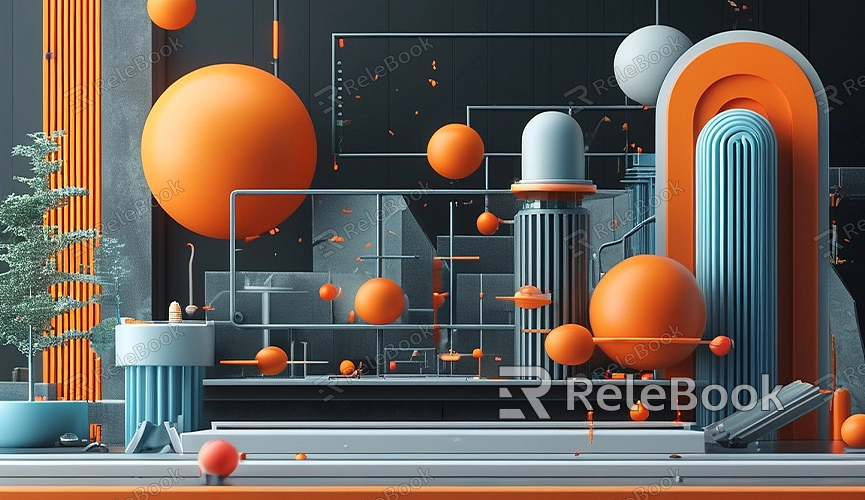How to Make an Object Emit Light in Blender Render
In 3D modeling and rendering, the use of lighting effects can greatly enhance the visual appeal of your work. Blender, as a powerful open-source 3D creation software, provides rich tools and functionalities to achieve various lighting effects. This article details how to make an object emit light in Blender render, helping you create more realistic 3D scenes.
Preparation
Before you begin, ensure you have the latest version of Blender installed and have a basic understanding of its interface and common functionalities, especially if you are a beginner.

Creating a Basic Scene
Firstly, let's create a basic scene for demonstration:
1. Open Blender, delete the default cube (select it and press `X` key).
2. From the top menu, choose "Add" > "Mesh" > "Plane" to create a plane as the ground.
3. Again, choose "Add" > "Mesh" > "UV Sphere" or "Cube" to add a basic geometry object that will emit light.
Applying Emitting Material

Next, we'll apply an emitting material to the object:
1. Select the object that you want to emit light, then click on the "Material" tab on the right side.
2. Click on the "New" button to create a new material.
3. Under Material Properties, choose "Emission" as the material type.
4. Adjust the emission color and strength. You can choose the color according to your preference, and higher strength values will emit stronger light from the object.
By following these steps, you have successfully applied an emitting material to the object, and you should see the object emitting light in the viewport.
Setting up Rendering Environment
To better showcase the emitting effect, adjust the rendering settings of the scene:
1. Click on the "World" tab on the right side, and set the background color to black or another dark color to emphasize the emitting effect.
2. Open the "Render" tab on the right side, choose the "Cycles" renderer (you can also use "Eevee" renderer, but Cycles provides more realistic lighting effects).
3. Under the "Lighting" options, add a directional light or a point light source to enhance the three-dimensional feel of the scene.
Optimizing Render Settings
For optimal rendering results, optimize the render settings:
1. Adjust Sampling: Under the "Render" tab, find the "Sampling" settings. Increasing the sampling values appropriately can improve rendering quality, though it will also increase rendering time.
2. Enable Denoising: Enable denoising under the "Render" tab to reduce noise after rendering, resulting in a cleaner image.
3. Adjust Exposure: In the "Color Management" options, adjust exposure and contrast to achieve better light and shadow effects.
Rendering Output
Once everything is set up correctly, proceed with the final rendering:
1. Press `F12` to start rendering, or click on "Render" > "Render Image" from the top menu.
2. After rendering completes, press `F3` to save the image, choosing the appropriate file format and location.
You have now successfully made an object emit light in Blender render and completed the rendering output.
By following these steps, you can easily create emitting objects in Blender, enhancing the visual impact of your 3D artwork. For high-quality 3D textures, HDRI, or 3D model downloads needed for creating models and virtual scenes, you can download them from Relebook and directly import textures and 3D models into your project.

